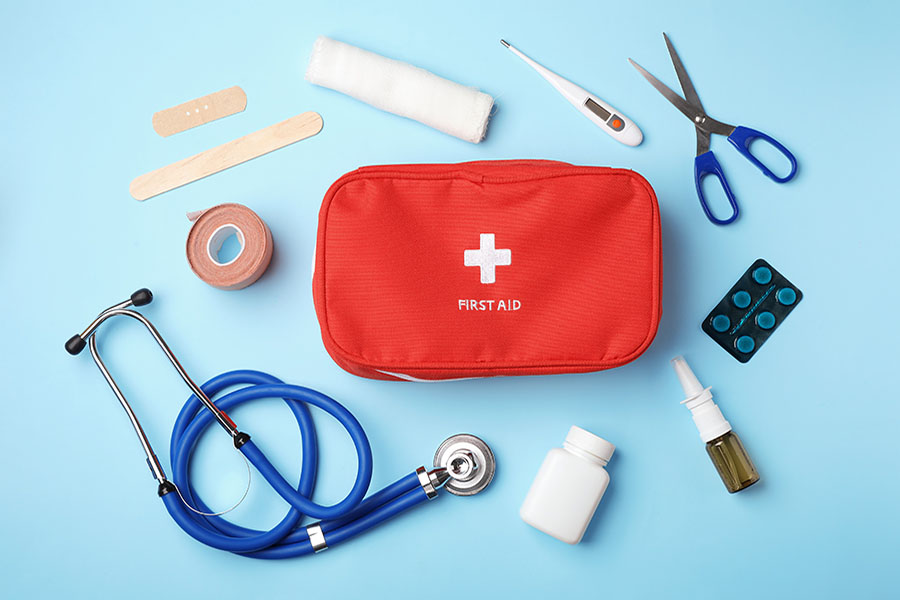
Whether you’re someone with your calendar filled out a year in advance or someone that books vacations hours before the flight leaves, having a plan in place for an emergency is incredibly important – especially when it comes to your children. No one understands this better than schools, who devote countless hours to creating emergency plans to keep their students safe, from running fire drills to crafting detailed communication plans.
While it’s a school’s duty to keep your children safe, there are also steps you can take to make sure that your children are prepared in the event of an emergency on campus. In honor of September being National Preparedness Month, we’ve compiled some simple actions you can take to make sure your family is emergency ready.
Keep the Conversation Flowing
The easiest way to help your child prepare for a school emergency is to simply talk to them. Whether your child has expressed concerns over something scary happening at school or not, making sure they know exactly what to do in a crisis can help them to not panic should anything serious ever happen. Go over general emergency best practices, like what to do in a fire and how to best shelter in place. The U.S. Department of Homeland Security has lots of great resources for different age groups, including games and activity books.
Regardless of your child’s age, review any information the school has provided regarding emergencies: maps, reunification points, who to alert if they ever see suspicious activity, etc. For younger children, it’s often enough to remind them that there are rules in place and that their teachers and school administration are looking out for them. For older students with more specific concerns, it may be more helpful to go over specific steps the school is taking (security officers, locked doors, etc.) and how the actions they take can also help to keep their school safe.
Stay Informed
Staying informed is important for both parents and students. Students need to be aware of their school’s procedures in emergencies, as well as basic information like where their nearest exits and stairs are in different classrooms. Your child will likely be given this information early in the school year, as well as participate in different safety drills throughout the year. Parents may need to put in a little extra effort to stay informed, however.
Take the time to become familiar with your child’s school’s emergency protocols. How will you be contacted in the event of an emergency? Where and when will you be able to pick up your child in different emergency situations? What staff members have medical training? It’s also a good idea to know your child’s schedule, especially for older students. Do they leave campus for lunch or free periods? What time does school end and begin? What days do they stay late for clubs or sports?
Make sure to know how your child’s school uses emergency response terms, too. Knowing what is meant when you hear the world “lockout” versus “lockdown,” for example, can save a lot of confusion and stress.
Give Schools the Tools They Need to Succeed
Some schools already ask parents to provide a small emergency kit for their children, but you can still make one if they don’t. These packs typically contain First Aid supplies, a snack, a juice or bottle of water, a flashlight, hand sanitizer, and any other items you think would comfort your child. Whether you give this to your child’s teacher or keep it in their schoolbag or locker, knowing these items are available to them can help students worrying about an emergency.
Even more important is making sure that schools can handle any medical emergencies your child may have. Make sure that the school and your child’s teachers are away of any medical conditions that could lead to an emergency. Provide the school with prescription medicine, inhalers, Epipens, or other specialized medical supplies your child may need. Meet with staff early in the year to ensure they know how to deliver medications to your child in an emergency. It’s also important that your child knows how to safely administer their own medications if a teacher can’t help them.
Empower with Education
Especially for older students, taking a first aid course can be very empowering. Many schools offer CPR or other basic first aid courses as part of PE. If not, these courses are typically held frequently by your local emergency service departments – and are often free. Being self-reliant is an important skill for children to develop as they age, but it’s even more important during an emergency when school staff may not be able to get help to students right away. First aid skills will be useful to your children throughout their lives, as well as enable them to help classmates in the event of an emergency.
Make Use of Tech
Many schools have software like FACTS Parent Alert that allows them to send texts, automated calls, or emails to parents in live time during an emergency. Make sure you’ve registered or signed up for programs like these at your children’s school and that your information is current. Letting your child know that their school has taken this additional step to keep them safe may help relieve some of their anxiety.
Don’t Discount Small Emergencies
Chances are, many of the “emergencies” your child will face at school won’t technically be emergencies. For a teenager or middle-schooler, however, spilling chocolate milk all over their shirt or getting their hair ruined in the rain can feel like a huge deal. Plan for these emergencies by encouraging your child to keep an extra set of clothes in their locker or backpack, as well as a small toiletry bag for things like hair clips, deodorant, and a brush.
With just a little extra planning, both you and your children can rest assured that they’ll be ready for whatever the school year throws their way. Now start prepping!
Recent Blogs
- What’s New and Next at FACTS: Q2 Product Roadmap Update
- Every Club Counts: Bringing Custom Apparel and Spirit Wear to All Student Programs
- Unlocking School Security: Why Schools Need a Visitor Management System
- Why School Fee Transparency Matters
- What You Need to Know About the ECCA: A New Federal Opportunity for School Choice


